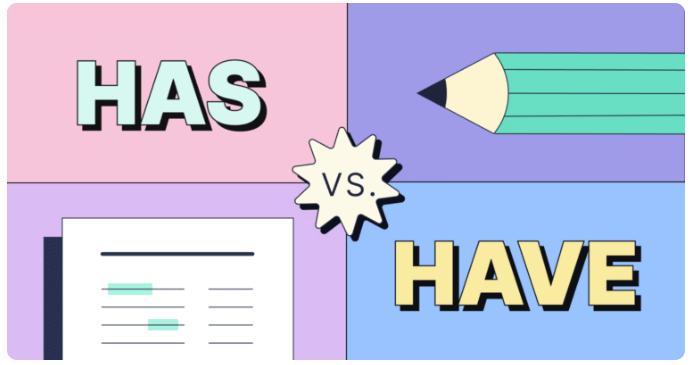Class 1 Exam > Class 1 Notes > English for Class 1 (Mridang) > Chapter Notes: Has, Have
Has, Have Chapter Notes | English for Class 1 (Mridang) PDF Download
| Table of contents |

|
| Introduction |

|
| When to Use Has and Have? |

|
| Examples in Sentences |

|
| Fun Exercise |

|
Introduction
The words has and have tell us that someone or something owns or possesses something.
They show what a person, animal, or thing has.
For example:
- I have a red balloon.
- She has a pet cat.

When to Use Has and Have?
1. Has – Used for One Person, Animal, or Thing
We use has with he, she, it, or one name/thing.
Examples:
- He has a football.
- She has long hair.
- The cat has sharp claws.
- Rahul has a big house.
2. Have – Used for More Than One or with ‘I’ and ‘You’
We use have with I, you, we, they, or many names/things.
Examples:
- I have a new toy.
- You have a nice dress.
- We have a big garden.
- They have two bicycles.
Examples in Sentences
- She has a pretty doll.
- We have a holiday today.
- The dog has a fluffy tail.
- I have a red pencil.
- They have a big car.
Fun Exercise
Fill in the blanks with Has or Have:
- He ______ a blue bag.
- I ______ a pet dog.
- She ______ two brothers.
- They ______ many toys.
- We ______ a big school.
Ans:
- He has a blue bag.
- I have a pet dog.
- She has two brothers.
- They have many toys.
- We have a big school.
The document Has, Have Chapter Notes | English for Class 1 (Mridang) is a part of the Class 1 Course English for Class 1 (Mridang).
All you need of Class 1 at this link: Class 1
|
27 videos|171 docs|34 tests
|
FAQs on Has, Have Chapter Notes - English for Class 1 (Mridang)
| 1. What is the difference between "has" and "have"? |  |
Ans."Has" is used with third-person singular subjects (he, she, it), while "have" is used with first-person singular (I), second-person singular and plural (you), and all plural subjects (we, they).
| 2. Can you provide examples of sentences using "has" and "have"? |  |
Ans."She has a cat." is an example using "has," while "I have a dog." is an example using "have."
| 3. Are there any exceptions to the rules of using "has" and "have"? |  |
Ans.The primary rule is that "has" is for third-person singular and "have" for others. However, in some dialects or informal speech, you might hear "has" used with plural subjects, but this is not grammatically correct.
| 4. How can I practice using "has" and "have" correctly in sentences? |  |
Ans.You can practice by writing sentences about your daily life or creating sentences about others. Use "have" for yourself and friends, and "has" for he, she, or it.
| 5. What are some common mistakes people make with "has" and "have"? |  |
Ans.Common mistakes include using "has" with plural subjects (e.g., "They has a car" instead of "They have a car") and forgetting to match the verb correctly with the subject's number.
Related Searches




















